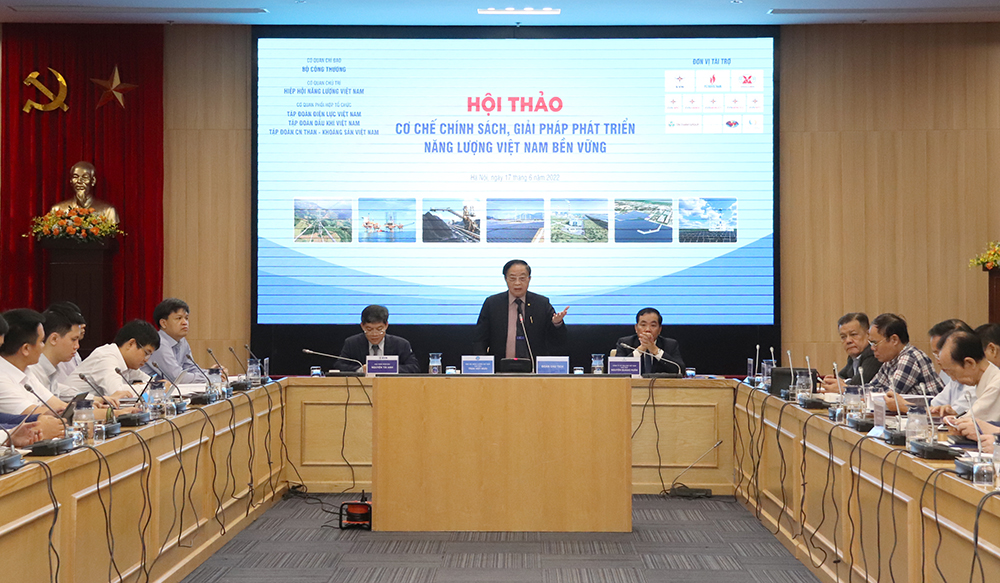
Mr. Tran Viet Ngai - Chairman of Vietnam Energy Association spoke at the workshop
In recent years, the Government has boosted the development of wind power and solar power with attractive feed-in tariffs, thereby adding new capacity to Vietnam's power system by about 27%. In the coming time, more attention should be paid to offshore wind power, because offshore wind power turbine capacity is in the range of 45 – 50MW, much larger than that of onshore wind power (only from 3 to 4MW). Offshore wind power will also address the shortage of electricity and move forward to eliminating power sources of greenhouse gas emissions such as coal-fired power, LNG, etc.
In the coming time, it is oriented to both fully exploit renewable energy sources and ensure operating the system in a safe, economical and environmentally friendly manner; develop gas and liquefied natural gas power sources with a reasonable proportion so as to lessen dependence on imported gas sources, creating conditions for domestic investors and businesses to join the electricity generation process.

An EVN representative raised recommendations at the workshop
A representative of EVN delivered a presentation at the workshop. After nearly 10 years of implementing Master Plan VII and the revised Master Plan VII, despite facing many difficulties and challenges, Vietnam's power sector has made a strong development in both scale and quality, ensuring safe and reliable electricity supply, meeting the needs of socio-economic development, national security and defense, and people's daily life. During the whole period of 2011 - 2020, EVN had successfully completed its plans of investment in power generation sources with a completion rate of over 93%. Power generation projects behind schedule are mainly implemented by non-EVN investors.